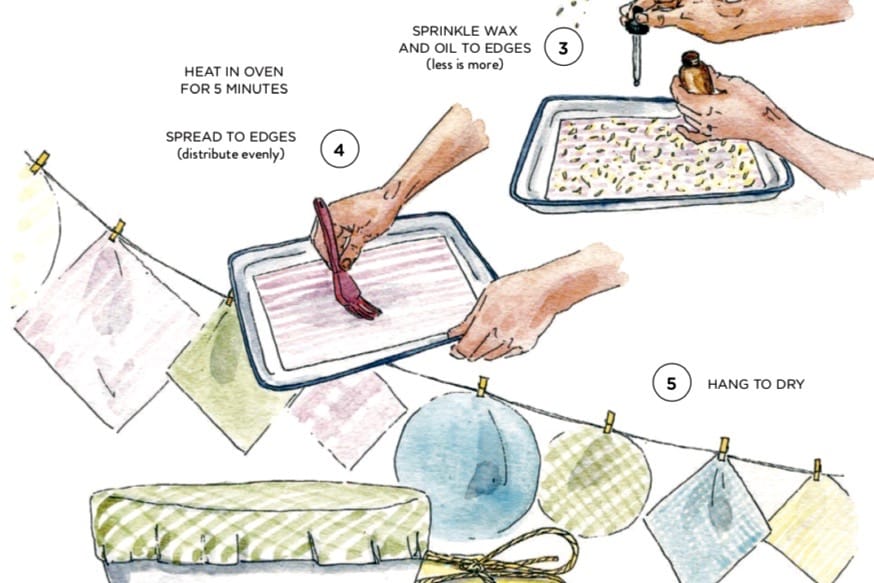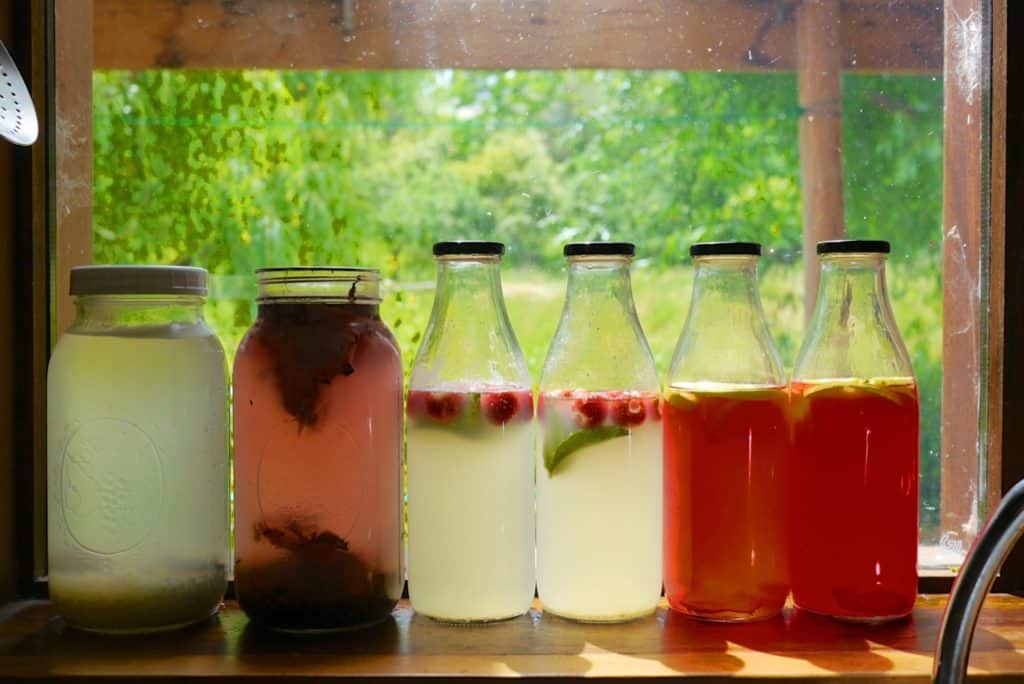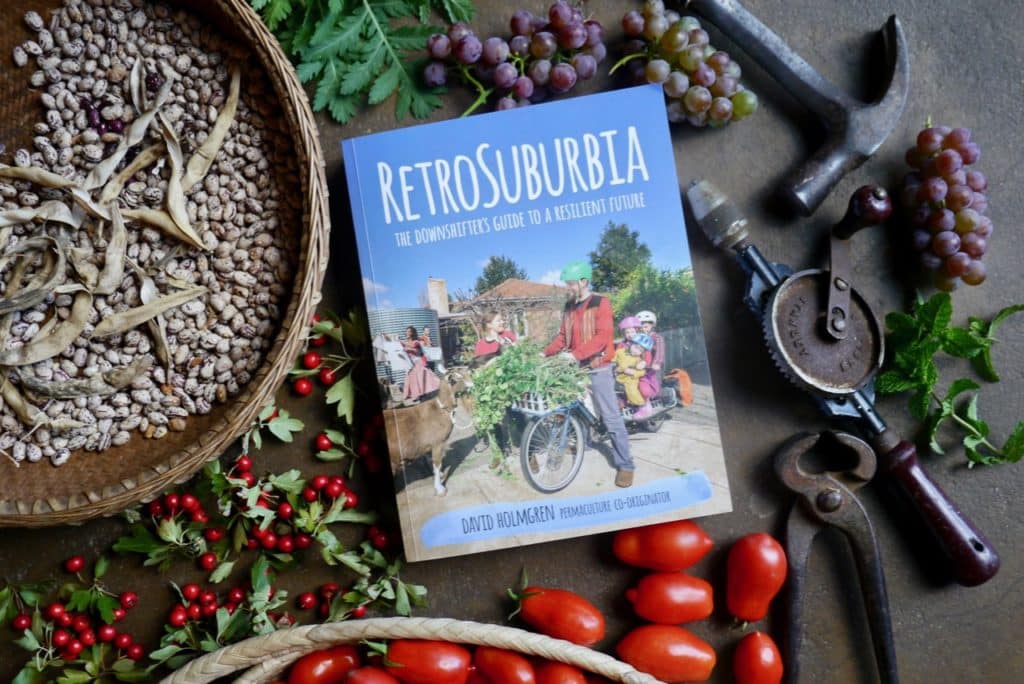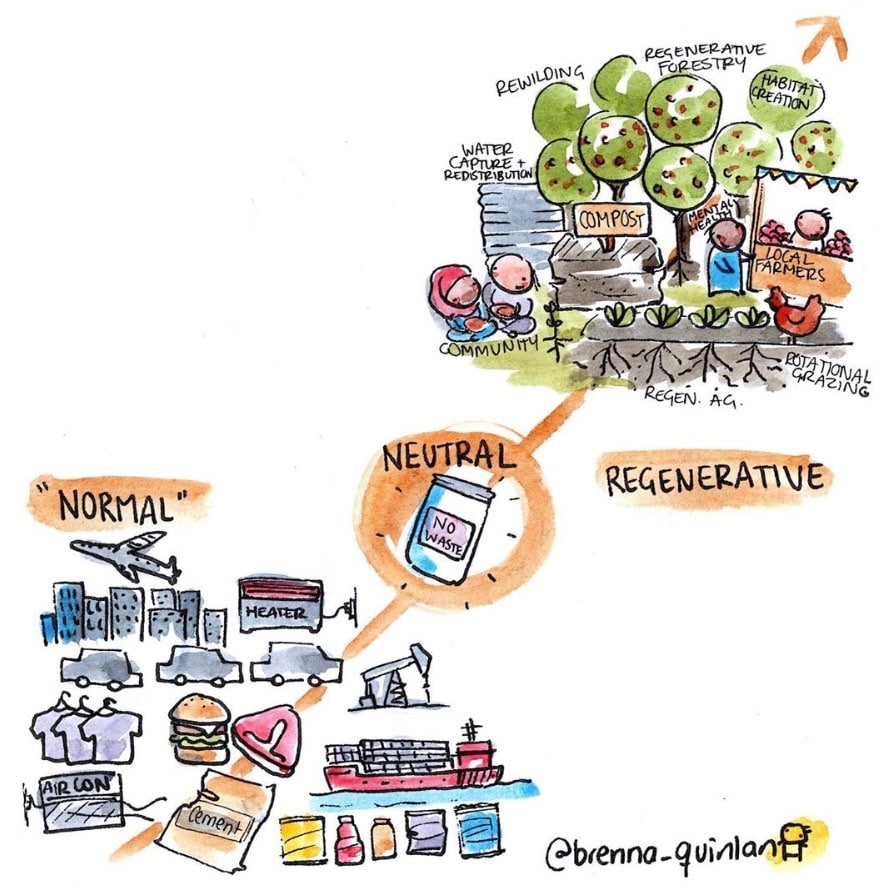Radical Hope: Home-Based Ideas for Climate Action
Author: Kirsten Bradley
Go to Source
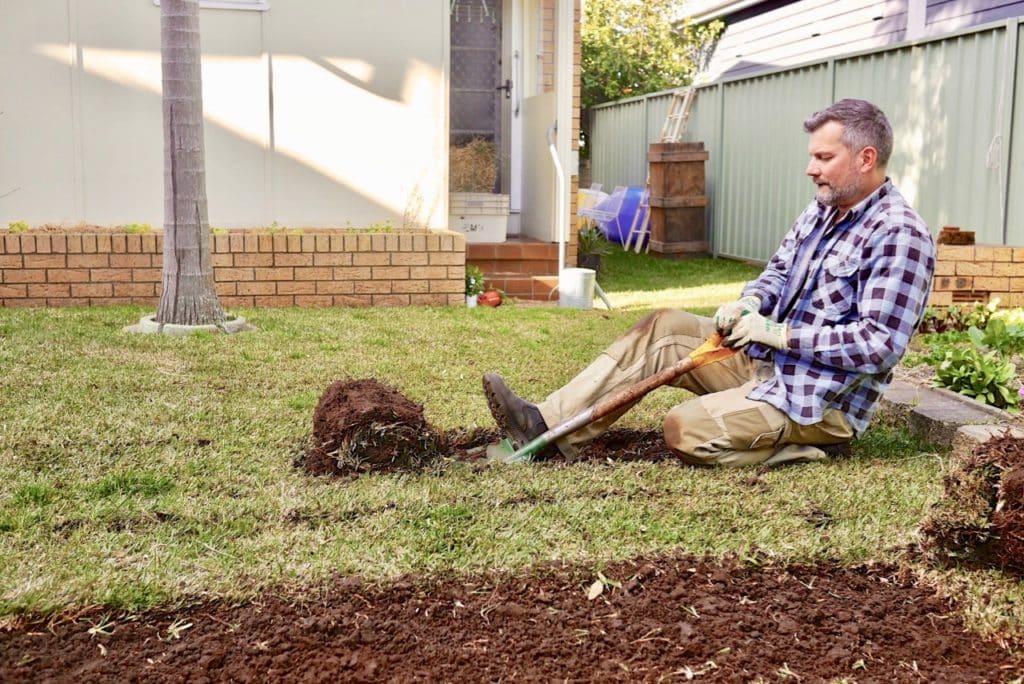
Following on from our last post about climate ready communities, let’s look at some home-level strategies and ideas for radical hope. There are so very many to choose from!
First off, if you’ve just arrived, read last week’s post about radical hope. Then let’s get going.
Home-based action changes everything (in your head).
This first point might sound obvious, but it is perhaps the hardest part – and the most fundamental – to ensuring effective climate action, for all of us.
How you think about hope, and what you think constitutes taking action in the face of our climate crisis, defines how you live.
When you decide to take small but significant actions at home, this decision will re-define how you live your life. How your family will live their lives. And we’re not just talking about creating less waste or shopping locally here.
A household committed to wasting less food, re-using things, connecting with their community and growing even just a few herbs – is a household that is fundamentally more empowered.
More empowered to talk about what you can do next, more empowered to re-connect with the ecosystem you live within, and more empowered to look outward to your community and find one more change to make, or to get involved in.
Now – imagine a street full of these kinds of households… each finding their way, each moving forwards – determined to do what they can, and not getting binary about what they cannot do just now.
Then imagine two streets full of these households. Then a block, then a suburb, then a town. What would your town look like if it was full of empowered households, all making small changes which built up to bigger and bigger ones?
What would it look like to live in a community full of empowered households?
A community that could support each other, swap skills, car-parts and parsley, help each other out occasionally, and (before you know it) decide to do a community solar panel bulk buy. Or start a food co-op. Or a community kitchen. Or clean up the local creek. Or all of these things, AND elect a town council that will declare a climate emergency and implement climate positive projects like street-cooling techniques (ie planting trees) and suburb-wide compost collection.
This stuff starts in your kitchen, and on your back step. It really does.
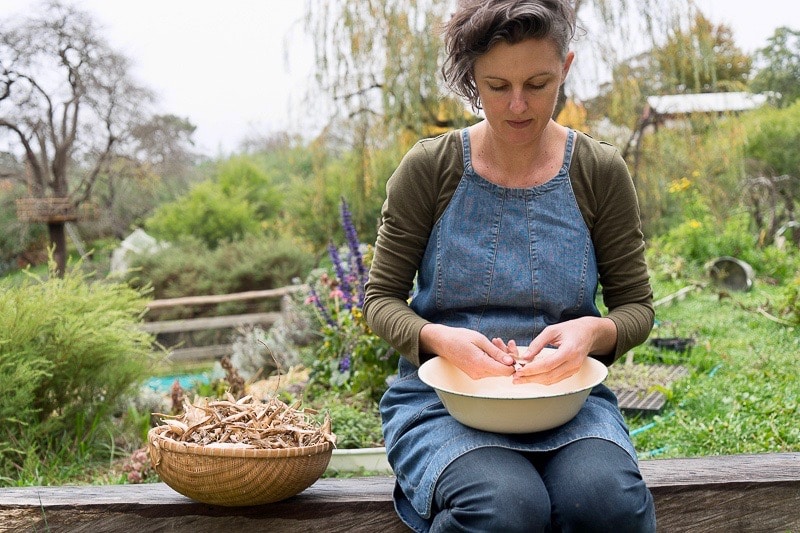
Re-defining ‘worth it’
We live in a culture where individual, consumption-based satisfaction is, we are told, paramount. We are worth it, and so we deserve that car/face cream/drink/smart watch/handbag. We buy more things, and then work longer hours to buy more things.
This has been an incredibly effective strategy to get us all to ignore one another and also to consume more – leading to record levels of both loneliness and carbon emissions.
Let’s think for a minute what else is worth it. Making bread is worth it. Taking a picnic and your family to your local park or wild space is worth it. Growing a pot of chives by your back step, even if you don’t have time or space for a ‘garden’ as such, is worth it. Figuring just one thing you can make from scratch on the regular (yogurt / crackers / pasta / muffins / seedlings ) is worth it.
Changing your mindset to begin to value voluntary simplicity, or even just a few aspects of that, over endless consumption is worth it.
As we mentioned last week, it is true that just making your own yogurt (cow, cashew or otherwise) will not, by itself, save our planet. Because there is no ‘just’ in what our collective response to this climate crisis must be.
But.
A mindset, and a household, that makes DIY yogurt (or DIY whatever) is a mindset and a household that is enabled, and empowered, to do one more thing. And then think, and act, on what else you could do. And then do that. And then do another thing.
Once you begin, household empowerment trickles out your front door, and spreads out sideways, like mycelium.
It spreads out into your street, and into your neighbours font porches, and then into their kitchens, their backyards. It can influence everything from their diet to their super fund choices. And this mycelial network of skills, awareness, empowerment and choices can grow, and grow, to the size of whole towns. To the size of whole cities, even.
And so, household-level change is part of the work that we all need to do.
“Some of the work we need to do is top-down system change. Some of the work to do is community-level, citizen initiated-and-led change. Some of the work to do is home-level, everyday habitual change.“
So – what will you do first?
We’ve written quite a bit on this home-level, climate-positive change making (our 27 life hacks for permaculture living is a good place to start), and no doubt you have a few ideas already – on how you could change up your routine, and take a climate-positive action or habit into your everyday. Begin with one of those ideas of yours, or with one of ours, below.
Keep it small, see it through, and make it a habit. Got that one thing in the bag? Great. Choose one more thing. You will find yourself getting braver – and connecting the dots between different habits and skills. Keep going.
Involve your kids, and/or your partner and friends. Finding they’re not into participating in the habit that you’ve chosen? Flex your imagination. Lure them into helping you, if necessary – with home-made pasta making sessions, or home-made honeycomb, or walking to the Main Street for an ice cream (where everyone has to find 3 weeds along the way, and ID them with your new weed book while eating said ice cream).
Do whatever it takes. Get your crew on board. Keep going. And then, chose one more thing…
6 home-level strategies for climate action you can take right now:
Make beeswax wraps
A simple action, with profound consequences. Make your own beeswax food wraps and grab some friends to help, or buy some locally – and ditch plastic wrap from your kitchen.
This isn’t about just the plastic wrap. It’s about changing your attitude to single-use plastics, and whether they’re acceptable to have in your life, given their effects on your ecosystem and climate. Shift your thinking, find or make alternatives, and find yourself moving on from using these things – permanently.
And then your neighbour sees one of your wax wraps covering a bowl, and asks what it is, and then outwards that particular strand of mycelium crawls…
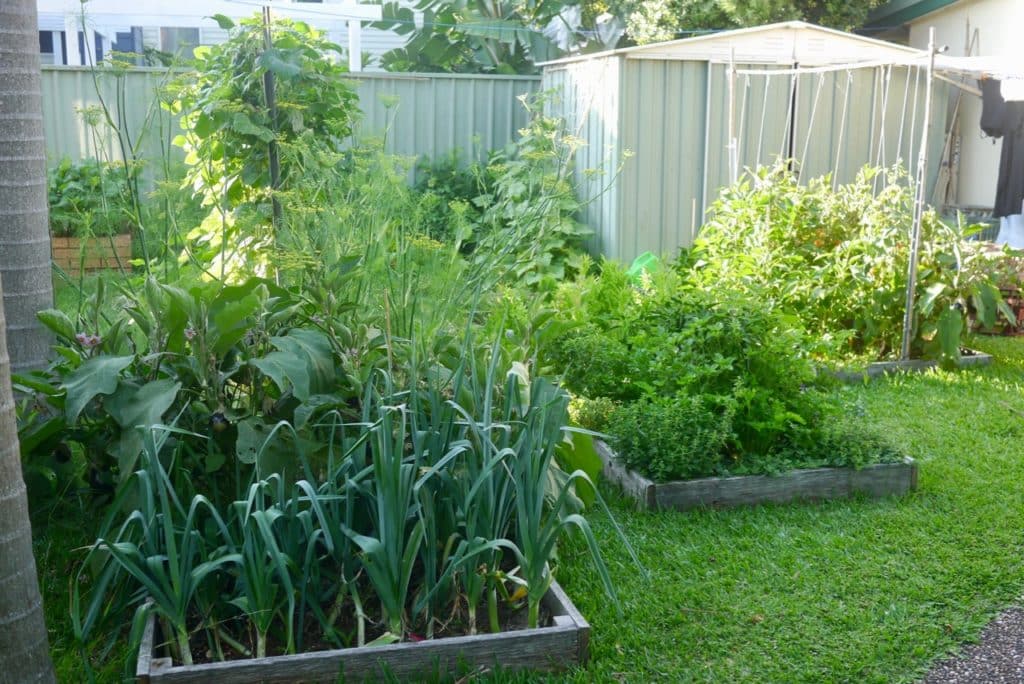
Dig up your lawn and grow something (even if you’re renting)
As permaculture renters, of one type or another these last 10 years, we can definitely attest to the power of asking forgiveness rather than permission when it comes to growing food in rental properties. It can be done, nearly always, in some form.
And if you DO own the soil on which you live, you really have no excuse. Grow some food. Now. Start with microgreens on your windowsill, or make some garden beds out of scrap timber, and get growing.
Your understanding of your ecosystem and your immediate food supply will increase immediately, and the flow-on benefits for your household’s resilience and your local pollinators are just two of the many, many rewards.
Re-think your transport
How can you increase your low or no-carbon travel? Where could you walk to that you currently drive? Where can you catch the bus to, that you hadn’t considered? Would an electric bike get you there just as easily as your car, and could you save on gym membership as a result of the extra exercise?
Can you sort out some proper waterproofing for your family that means the Sunday walk is ALWAYS a walk, no matter the weather? What will you discover along the way, as your household looks up options like car sharing, bus timetables and proper walking gumboots?
And does one less car trip a week really matter? Yes, it does. Everything matters, now. Do what you can. But do it. And keep doing it.
Make your own probiotic soda
For families where DIY fizzy drinks might seem a bit extreme or doomed to failure, may I present the power of Tibicos (also known as water kefir). Probiotic soda that tastes just as good as a bought one, or better, even.
The ingredients to this soda are tibicos grains (a SCOBY – like kombucha, but not), sugar, water and fruit. And billions of probiotic bacteria which will end up in your kids biomes, making them healthier and more resilient, while saving you money.
This one is a daily habit. It takes about 5 minutes a day, and results in litres of delicious fizzy goodness each day in return. A note that I have had some small and seriously fussy eaters in my kitchen over the years and not one of them has not liked this fizzy drink. Here’s how to make it.
Hold a Climate Conversation dinner party with close friends
Oh boy are these a good idea. Got friends that you only talk about Climate Change with once you’ve had four drinks each? Want to really talk about what climate action in your friendship group could look like, but also don’t want to be the ‘doomer’ at the party? Hold a climate conversations dinner party. You’ll be so glad you did. Talking about your concerns without embarrassment is powerful. You’ll be surprised what you all come up with as a result.
A few resources and ideas to get you going – Post Carbon’s We Need to Talk is a great place to start. There’s also this Host a Climate Conversation model and in Singapore they do it this way.
Passively manage your home’s temperature.
Yes, closing your blinds to block the sun, or putting a jumper on instead of turning up the heat, may not sound very earth shattering (or healing) as a climate response – I know.
But did you know that air conditioning systems are collectively one of the biggest emitters of carbon into our atmosphere? This includes what happens at your place, too.
This is prime mindset-shifting territory. How could you make your home that bit more resilient to extremes of temperature? What blinds or curtains can you close or open regularly, to passively regulate your home’s temperature? Where could you plant a deciduous tree to let in winter sun and block summer heat? How could you use thermal mass to regulate temperature inside a little more?
Do some research, and have a think. There’s something that every household could do a bit better, on this front.
Read RetroSuburbia
This is David Holmgren (co-originator of permaculture)’s latest work – and it is a whopper of book, entirely about home-level climate adaptation and solutions. Every household should have a copy of this, in our opinion. Or ask your library to get it in.
So, so many great home-level ideas, solutions, designs and concepts in here.
If you have read RetroSuburbia, you might like to hook into their facebook group which is an awesomely active place of knowledge sharing. check it out here.
Change your super fund to one which does not support fossil fuel companies
Most of us in Australia have some Super stashed somewhere, even if it’s a woefully small amount. This money of yours is managed long-term by your super fund, a company who can use it in the meantime, for whatever they like.
This often (and nearly always) includes using your money to fund fossil fuel companies and other extremely dodgy enterprises which are exactly the kind of companies we need to move away from funding, as quickly as possible, to ensure a liveable climate for all.
This is where you come in. Most Australians have the ability to chose, or switch to, whatever super fund you like to store that money of yours. So chose a good one, that does not fund or support fossil fuel interests – according to current research, Future Super and Australian Ethical Super are the best of the bunch. This matters.
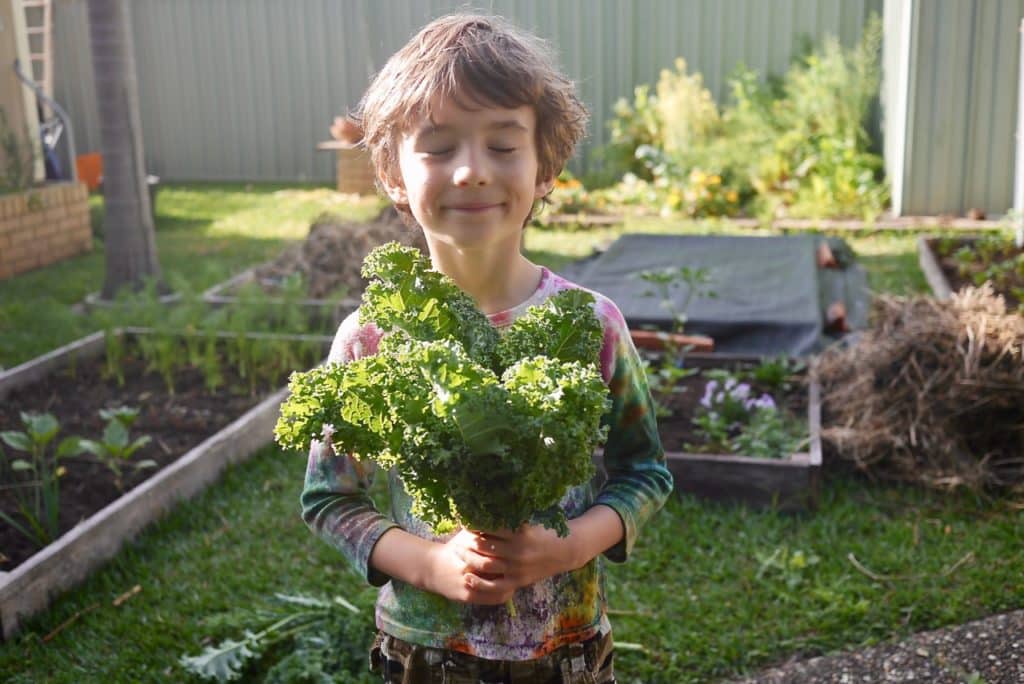
Alrighty, well that’s a few tiny options for climate action on the home front. If you even sit down for 10 minutes and do a little brainstorm, you will come up with many, many more ideas, I’m sure.
And yes, these are all small things to take on at your place. But by doing these – any of these – you will shift your thinking. About energy, about climate, about community, about home.
About what you can do. About what we can all do. About what it looks like – when a whole street, suburb, a whole town of empowered households say hell no, I’m not going to just sit here, I’m going to do something. And then, one more thing. All this adds up to a LOT of action, which influences all sorts of other, higher-level thinking.
…and outwards, and onwards, the mycelium spreads…
Next week, we’re looking at community-level strategies for radical hope – initiatives that are already happening, all around you, created by citizen-led action on climate change, creating the world we need. Initiatives, programs and ideas that you could copy, and start where you live. Because if these communities can do it, yours can, too.
What will you do first? Tell us! x
Want to keep discussing home-level action? Join up to our super friendly and inclusive Milkwood Permaculture Community facebook group, and let your thoughts, ideas and questions flow…
The post Radical Hope: Home-Based Ideas for Climate Action appeared first on Milkwood: permaculture courses, skills + stories.

